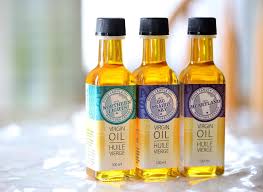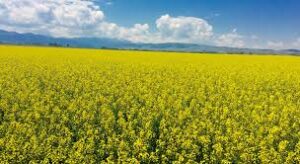

Canola is an oil-seed crop grown mainly in the winter rainfall regions of the Western Cape, although it is also farmed in the North West, Limpopo and Northern Cape provinces. Canola is widely grown for its high quality oil for human consumption.
Although it is among the least discussed, canola seed is a crop experiencing significant growth in South Africa. This particular crop has seen tremendous progression over the past 18 years – from just 17 000 ha in 1998 to 68 075 ha in 2016 and still growing. In line with area plantings canola seed production increased from 21000 tons in 1998 to 108 860 tons in 2016.
Canola is an organic health crop which falls below olive oil, but it is more affordable. It has various health benefits which help alleviate heart disease, diabetes and stroke. Not only is it edible, it is also used by the pharmaceutical industry in their products because it contains omega oil. Oil-seed is harvested and crushed for oil. The by – product will be used for animal feed because it is protein rich.
Canola should ideally be planted after the first autumn rains (15 April – 15 May) once there is sufficient moisture to ensure good germination. One of the most important factors in ensuring an optimum canola yield is to achieve a uniform sized and evenly spaced seedling stand. An evenly space stand will contribute to weed control as the canola plants rapidly shade out later germinating weeds, often a major problem in many other crops. Uniform sized plants assist in making management decisions regarding time to spray, top-dress, swath etc much easier.
Canola should be planted between 15mm and 25mm deep. Ideally a stand of 40 to 50 plants/m2 should be target.. This can be achieved by planting hybrid seed at 2kg/ha to 3kg/ha. Canola is small seeded, thus it is important that the seeds make good contact with the soil to promote germination.
It is vitally important to monitor the canola regularly (every 2 – 3 days) from planting up to the five-leaf stage. Many pests and diseases can cause severe damage in a short space of time to young canola seedlings.Make sure to correctly identify the pest causing the problem and use the chemical registered to control it.
Overall, South Africa’s canola seeds and products market is growing and increasingly becoming interlinked with the global market. It is therefore, important that domestic producers are aware of these emerging global production trends, and plan according.
Interested n starting your own successful canola farming operation?
YOU NEED TO START WITH A WELL STRUCTURED BUSINESS PLAN BACKED BY STRONG FINANCIAL PROJECTIONS. NEED HELP – CONTACT US NOW FOR PROFESSIONAL HELP AT – (27) 84 583 3143 OR EMAIL: money@global.co.za


